| Content | User's manual
- Ultra compact phono preamplifier and equalizer
- Proper RIAA equalization
- RCA inputs and outputs
- 6.3 mm stereo headphone output connector
- Sturdy metal housing
- 12 V AC/DC adapter included
The LD Systems PPA 2 is a very compact analogue phono preamplifier, which equalises the extremely low output signal of conventional turntables to RIAA standards. It allows you to connect to devices without any phono input, such as mixers, PA power amplifiers or sound cards. The phono inputs are designed as RCA jacks, just like the line outputs; the PPA 2 also has a screw terminal for the ground conductor of the turntable and a 6.3 mm stereo jack for connecting a headset. The THD factor of the preamplifier is below 0.05% and the channel separation is -75 dB. The LD Systems PPA 2 uses a 12 V AC adapter; a bright LED indicates the power supply on the top of the sturdy metal chassis.
Product type
Other Studio and Recording Equipment
Type
Stereo Input / Stereo Output
Frequency response
RIAA Curve Hz
Signal-to-noise ratio
70 dB
THD |
Mic Inputs
• Frequency response at minimum gain (0dB): -0.35dB at 20Hz and –3dB at 122kHz
• Frequency response at maximum gain (60dB): –2.5dB at 20Hz and –3dB 103kHz
• Gain range: 0dB to +60dB in 10dB steps, plus 0dB to +20dB continuously variable trim
• Maximum headroom: +7.4dBu
• THD+N: 0.0009% (measured at 1kHz -20dBu input signal, at 30dB gain setting, with a 20Hz/22kHz bandpass filter)
• Noise EIN: -126dB (measured at 60dB of gain with 150Ω termination and 20Hz/22kHz bandpass filter)
• Noise at main output with unity gain: -98dBu (measured with a 20Hz/22kHz bandpass filter)
• SNR: 123dB (relative to max output 25dBu)
• SNR: 120dB (relative to 0dBFS (+22dBu)
• CMRR: 88dB.
• Input Impedance, variable: 600Ω, 1400Ω, 2400Ω, 6800Ω
Line Inputs
• Frequency Response at unity gain (0dB): -0.3dB at 20Hz and –3dB at 94kHz
• Gain range: -20dB to +10dB in 10dB steps, plus 0dB to +20dB continuously variable trim
• Maximum headroom: +25.4dBu
• THD+N: 0.002% (measured with +4dBu input signal, 0dB gain setting, with a 20Hz/22kHz bandpass filter)
• Noise at main output with unity gain: -91dBu (measured with a 20Hz/22kHz bandpass filter)
• SNR: 116dB (relative to max output 25dBu)
• SNR: 113dB (relative to 0dBFS +22dBu). Input Impedance: 10kΩ
Instrument Inputs
• Frequency Response at +10dB gain: -0.2dB at 20Hz and 0dB at 200kHz
• Frequency Response at +40dB gain: -3dB at 20Hz and –3dB at 38.4kHz
• Gain range: +10dB to +40dB continuously variable
• Maximum headroom: +11.5dBu
• THD+N: 0.006% (measured with –20dBu input signal, at minimum gain (+10dB), with a 20Hz/22kHz bandpass filter)
• Noise at main output with minimum gain (+10dB): -95dBu (measured with a 20Hz/22kHz bandpass filter)
• Input Impedance = >1MΩ
High Pass Filter
• Roll off = 18dB per octave 3 pole filter
• Frequency range: 16Hz to 420Hz (continuously variable, measured at the 3dB down point)
Meters
• 6 LED meter is calibrated 0dBFS = +22dBu (the maximum level which can be correctly converted by the optional internal A/D converter before overload occurs). The meter calibration points are as follows:
Meter panel calibration value in dBFS / Equivalent dBu value
0dBFS / +22dBu
-2dBFS / +20dBu
-6dBFS / +16dBu
-12dBFS / +10dBu
-18dBFS / +4dBu
-42dBFS / -20dBu
Front and rear connectivity
Analogue Channel Inputs (Inputs 1-4)
• 4 instrument 1⁄4” TS jack inputs on front panel
• 4 microphone XLR inputs on rear panel
• 4 line 1⁄4” TRS jacks on rear panel
• 4 insert return 1⁄4” TRS jacks on rear panel
• 4 ADC XLR inputs on rear panel
Analogue Audio Outputs (Outputs 1-4)
• 4 line XLR outputs on rear panel
• 4 insert send 1⁄4” TRS jacks on rear panel
Other I/O
• IEC power input connector 100Vac – 240Vac
Front Panel Indicators
• 8 output meters, 6 segment
• 4 30-60 mic gain range selection indicator
• 4 +48V phantom power indicator
• 4 Phase indicator
• 4 Insert In indicator
• 4 Filter In indicator
• 4 Input selection indicators (Mic, Line, Inst)
• 4 Z In microphone input impedance selection indicators (Low, ISA110, Med, High) Clock select indicators (44.1, 48, 88.2, 96, 176.4, 192)
• Ext clock indicators (Lock, Word clock, 256X)
Weight
5.5kg
12.2lbs
Dimensions (W x H x D)
480mm (W) x 88mm (H) x 280mm (D)
19" (W) x 3.5" (H) x 11" (D)
|
Applications
Console input extending for both Digital and Analog mixing
consoles in Studio, Live and Broadcast
Mic Pre-amps for ADAT/ Hard Disk/ Multitrack Recording
Innovation
If you love your compact Digital (or Analog) mixing console, but wish it had
more microphone inputs, ARX has the solution ? the 8 Pre: eight channels
of superb sounding Microphone Pre-amps in a compact 1 RU chassis.
The 8 Pre is the ideal console extender for those times when you need more
microphone inputs. Now you can put those unused line inputs to good use,
and who knows - the 8 Pre pre-amps sound so good that you?ll probably end
up using them all the time instead of the ones that came with your mixer!
Superb Audio Quality
The 8 Pre?s ultra low noise figures come from extensive use of premium
components plus care and attention to board design and layout. The result is
superb, transparent audio quality and the headroom to handle anything that a
mic can throw at it.
Gain is adjustable from 20 db through to 60 dB via a trim control on the front
panel, plus we?ve included a ?20dB Pad switch to tame the hottest condenser
mic output if required. The Clip status LED lights up 1 dB before the onset of
clipping, just to warn you you?re getting close.Phantom power is switchable in
banks of four channels: 1 through 4, 5 through 8. A Phase reverse switch is also
provided on each pre-amp channel to eliminate any close miking problems.
In short, the ARX 8 Pre is the mic Pre-amp that you?ll wish the console manufacturer
had used. It provides a unique solution to today?s multiple Mic Pre-amp requirements.
T E C H N I C A L S P E C I F I C A T I O N S
Input Gain 20dB to 60dB
Input Pad ?20dB
Input Impedance 4 KOhm
Input Headroom +23dB
Output Impedance 300 Ohm
Output Level (Max) +23dB
Frequency Response 20Hz ? 20KHz ±0.2 dB
Signal to Noise ratio (Gain set @ 20 dB)
?93dB Unweighted, ?99dB ?A? weighted
Distortion @ Unity Gain .004%, 20 Hz ? 10 KHz
Dynamic Range 116 dB
Phantom Power 48 VDC
Input Connectors Balanced XLR
Output Connectors Balanced TRS jack
Clip Indicator Illuminates 1 dB prior to clipping
Power Requirements 100/120 V AC, 220/240 V AC
Weight 5 lbs/2.2 Kg
Dimensions 19“W x 1?“H x 6“D, 482 x 44 x 155mm | ISA OneClassic Single-channel Microphone Pre-amplifier with Independent D.I.
Key Features
ISA Series Transformer-based Pre-amplifier
Encased in a rugged and portable chassis, ISA One offers the classic Focusrite microphone pre-amplifier at its lowest cost to date.
Flexible Independent D.I. Channel
ISA One is ideal for both engineers and demanding performers alike, featuring independent gain control, an output for routing to an amp, an independent XLR output on the rear and routing to the optional ADC.
Switchable Impedance
Choose one of four carefully selected input impedances, including the original ISA 110 setting, to suit any microphone.
Optional Stereo 192kHz ADC
This optional card embodies cutting-edge conversion technology, incorporating Focusrite analogue circuitry to deliver the best A-D performance in its class (Dynamic range of 119dB).
Rugged Custom Flight Case
Built to protect your ISA One from the rigors of the road. Rugged plywood construction with a solid polypropylene exterior and reinforced corners.
Headphone Output with Volume Control
ISA One can feed either a sum of the two inputs to the headphones output, or an external stereo cue mix (such as a stereo mix feed from an interface) via two TRS Jack inputs on the rear of the unit.
Dedicated Insert Point
Allows you to place extra processing between the pre-amplifi er or D.I. and the optional converter, such as an EQ or compressor.
Specifications
Analogue Channel Inputs
- XLR Mic input
- One XLR and one TRS line input
- XLR Instrument input TRS Jack
- External ADC input TRS Jack
- TRS jack return
|
Analogue Channel Outputs
- TRS jack send
- XLR balanced line output
- XLR DI output
- TS jack DI through
|
Analogue Channel Additional I/O
- TRS Jack cue mix left input
- TRS Jack cue mix right input
- 1/4” TRS Jack headphones output
|
Mic Input Response
| Gain range |
0dB to 60dB in 10dB steps + 20 dB of variable gain |
| Input Impedance |
Switched Impedance setting Equivalent Input Impedance at 1kHz |
Low = 600 Ohms
ISA110 = 1400 Ohms
Med = 2400 Ohms
High = 6800 Ohms |
| EIN (Equivalent Input Noise) |
-126dB measured at 60dB of gain with 150 Ohm terminating impedance and 22Hz/22kHz band-pass filter |
| Noise |
Noise at output with unity gain (0 dB) and 22 Hz-22 kHz band pass filter |
-97 dBu |
| Signal-to-Noise Ratio |
106 dB relative to max headroom (9dBu) |
| Total Harmonic Distortion + Noise |
Measured at medium gain (30dB) with a 1kHz -20dBu input signal and with a 22Hz/22kHz band-pass filter |
|
| Frequency Response |
At minimum gain (0 dB) |
-0.5dB down at 10Hz and -3dB down at 125kHz |
|
At maximum gain (60dB) |
-3dB down at 16Hz and -3dB down 118kHz |
| CMRR (Common Mode Rejection Ratio) |
98dB (Channel 1, 1kHz, maximum gain with +24 dBu input) |
| Crosstalk Channel to Channel |
With 10dB@1kHz input to chA, chB output =104dBrA. With 10dB@10kHz input to chA, chB output = 84dBrA |
Line Input Response
| Gain range |
-20dB to +10dB in 10dB steps + 20 dB of variable gain |
| Input Impedance |
10 kΩ from 10 Hz to 200 kHz |
| Noise |
Noise at main output with gain at unity (0 dB) measured with 50 Ω source impedance and a 22Hz - 22 kHz band pass filter |
-96 dBu |
| Signal-to-Noise Ratio |
Measured with a 22 Hz-22 kHz band pass filter |
120 dB relative to max headroom (24 dBu)
118dB relative to 0dBFS (+22dBu) |
| Total Harmonic Distortion + Noise |
Measured with a 0 dBu input signal, and a 22 Hz-22 kHz band pass filter |
0.0001% |
| Frequency Response |
At unity gain (0 dB) |
-0.3dB down at 10Hz and -3dB down at 200kHz |
Instrument Input Response
| Gain range |
10dB to 40dB continuously variable |
| Input Impedance |
High = greater than 1M
Low =greater than 300k |
| Noise |
Measured with 22 Hz-22 kHz band pass filter |
Minimum gain (+10 dB): -92 dBu
Maximum gain (+40dB): -62dBu |
| THD |
At minimum gain (+10) |
| Frequency Response |
At minimum gain (+10 dB) |
-10dB input: 10Hz-100kHz +/- 0.6dB |
|
At maximum gain (+40 dB) |
-40dB input: -2.5dB down at 10Hz and 0dB at 100kHz |
Meters
| Moving Coil (MC) Meter |
factory calibrated to 0VU = +4dBu with 1kHz sinewave. With the VU Cal button pressed the meter can be adjusted on the rear panel to allow 0VU to equal +10dBu to +26dBu with the centre detent being equal to +22dBu. |
| Peak LED Meters |
Calibrated in the detent position for 0dBFS = +22dBu, calibration is adjustable on the rear panel to allow 0dBFS to equal +10dBu to +26dBu |
| Routing for MC and Peak1 meter is after the HPF, pre insert send or switched post insert return. Peak2 is always pre ADC channel 2, which can be fed by external input or Instrument input. |
| LED Levels |
As follows, when peak calibration is set to center detent on the rear panel. (This is when using the internal ADC). |
0 = +22dBu
-2 = +20dBu
-6 = +16dBu
-12 = +10dBu
-18 = +4dBu
-42 = -20dBu |
| Frequency Response |
At minimum gain (+10 dB) |
-10dB input: 10Hz-100kHz +/- 0.6dB |
|
At maximum gain (+40 dB) |
-40dB input: -2.5dB down at 10Hz and 0dB at 100kHz |
High-Pass Filter
| Roll-Off |
18 dB per octave (3 pole filter) |
| Frequency |
Fixed 75Hz measured at the 3dB down point |
Weight and Dimensions
| W x D x H |
220mm (W) x 104mm (H) x 254 - 290mm (D - top to bottom) |
8.66" (W) x 4.1" (H) x 10" - 11.4" (D - top to bottom) |
| Weight |
3.9 kg |
8.6 lbs |
|
EWI PDI-100 PARA ACOUSTIC DI Box
This is a medium grade professional application Para Acoustic Active DI, which will work well on instruments with passive pickups or active pickups.
The construction is reasonably rugged and the components are well suited for the application yielding results that are typically acceptable for all but the most discerning artists.
The on-board tone and volume controls give the operator a lot of choices in shaping their sound prior to sending the signal to the mix console. This allows an artist to use this device in-place of or in addition to a traditional stage amp for their instrument. This is an excellent choice for IEM bands, or bands that like to keep their stage volume low.
This item is typically used to split the instrument signal going to a stage amp so a feed can be sent also to the mix board, or be used as a stand-alone instrument pre-amp. It is equipped with a ¼” jack for input, a 1/4" jack for output to a stage amp, one XLR jack for the send to the board and a TRS jack for inserting an FX device.Since this is an active D.I. box, it needs to be powered which can be done either with Phantom Power from the mix board, or with the supplied internal 9v battery. The battery is fairly easy to change by removing one screw in the bottom of the case.
|
Two channel classic Focusrite ISA transformer-based preamps Front panel, per channel: - 1/4" instrument input
- Variable input impedance - Low, ISA 110, Medium, High
- Input selection - Mic, Line, Instrument
- 0 - 30 dB/30 - 60 dB gain switch
- Phantom power switch
- Phase invert switch
- 0 - 60 dB gain in 10 dB steps
- 0 - +20 dB continuously variable trim
- Variable high-pass filter with on/off switch
- Insert point on/off switch
- Eight-LED user-calibrated level meters
- Single power switch
Rear panel, per channel: - XLR-F mic inputs
- 1/4" TRS line inputs
- 1/4" TRS Sends
- 1/4" TRS Returns
- XLR-M line output
- Single peak meter calibration dial
- Single IEC power socket
Measured Performance | Maximum Input and Output Levels | | Maximum Output Level |
+24 dBu with a THD+N
| | Maximum Microphone Transformer Input Level | +7 dBu with a THD+N | | Mic Input Response | | Gain range | 0 dB to +60 dB in 10 dB steps, plus 0 dB to +20 dB continuously variable trim | |
Input Impedance
| Switched Impedance setting
Equivalent Input Impedance at 1 kHz | Low = 600 Ω
ISA 110 = 1.4 kΩ
Med = 2.4 kΩ
High = 6.8 kΩ | EIN
(Equivalent Input Noise) | Measured at 60 dB of gain with 150 Ω
source impedance and 22 Hz-22 kHz band pass filter | -127 dB | |
Noise
| Noise at output with unity gain (0 dB) and 22 Hz-22 kHz band pass filter | -97 dBu | |
Signal-to-Noise Ratio
| Measured with 150 Ω source impedance and 22 Hz-22 kHz band pass filter | 121 dB relative to max output +24 dBu | |
Total Harmonic Distortion + Noise
| Measured with a -20 dBu input signal at +30 dB of gain and with a 22 Hz-22 kHz band pass filter |
| |
Frequency Response
| At minimum gain (0 dB) |
-0.5 dB at 10 Hz,
-1 dB at 135 kHz, relative to 1 kHz
| |
At +60 dB gain
| -6 dB at 10 Hz,
-1 dB at 115 kHz, relative to 1 kHz | |
CMRR (Common Mode Rejection Ratio)
| -94 dB for mic input at 60 Hz for max. output = +24 dBu
-91 dB for mic input at 10 kHz for max. output = +24 dBu | |
Crosstalk Channel to Channel
| Mic input, with I/P = 0 dBu, gain = 0 dB @ 1 kHz input to channel A, channel B output = -85 dB | | Line Input Response | |
Gain Range
| -20 dB to +10 dB in 10 dB steps, plus 0 dB to +20 dB continuously variable trim | |
Input Impedance
| 10 kΩ from 10 Hz to 200 kHz | |
Noise
| Noise at main output with gain at unity (0 dB) measured with 50 Ω source impedance and a 22Hz - 22 kHz band pass filter |
-97 dBu
| |
Signal-to-Noise Ratio
| Measured with 50 Ω source impedance and a 22 Hz-22 kHz band pass filter |
121 dB relative to max output +24 dBu
| |
Total Harmonic Distortion + Noise
| Measured with a 0 dBu input signal, +10 dB of gain and a 22 Hz-22 kHz band pass filter |
| |
Frequency Response
| At unity gain (0 dB) | -0.3 dB at 10 Hz,
-1 dB at 80 kHz, relative to 1 kHz | |
Crosstalk Channel to Channel
| Line input, with I/P = 0 dBu, gain = 0dB
@ 1 kHz input to channel A |
Channel B output
= -91 dB
| | Instrument Input Response | |
Gain Range
| +10 dB to +40 dB continuously variable trim | |
Input Impedance
| > 2 MΩ | |
Noise
| >Measured with 22 Hz-22 kHz band pass filter | Minimum gain (+10 dB) = -95 dBu | |
Frequency Response
| At minimum gain (+10 dB) |
-0.1 dB at 10 Hz,
-1 dB at 115 kHz, relative to 1 kHz
| |
At maximum gain (+40 dB)
|
-2.5 dB at 10 Hz,
-1 dB at 110 kHz, relative to 1 kHz
| | High-Pass Filter | |
Roll-Off
| 18 dB per octave (3 pole filter) | |
Frequency Range
| Continuously variable from 16 Hz to 420 Hz (-3 dB) | | Weight and Dimensions | |
W x D x H
| 480 mm x 280 mm x 44 mm | |
Weight
| 3.7 kg |
|

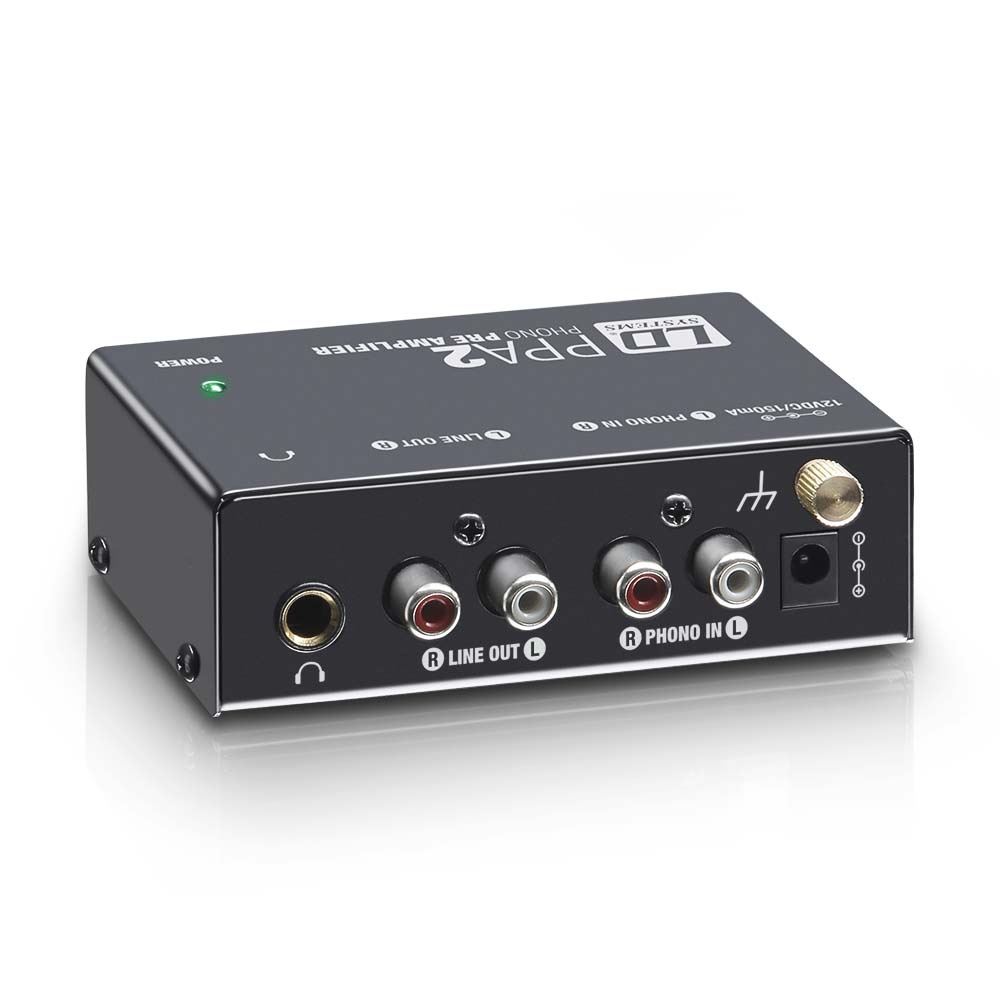

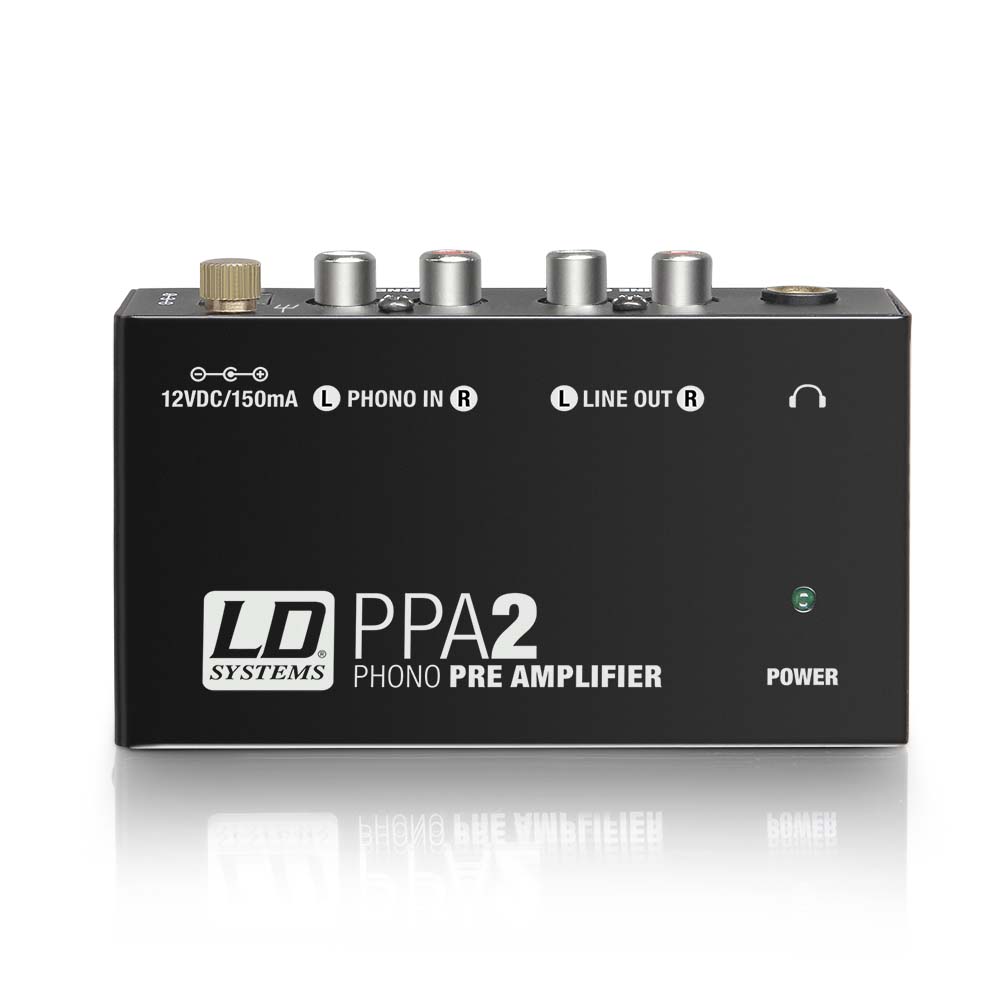
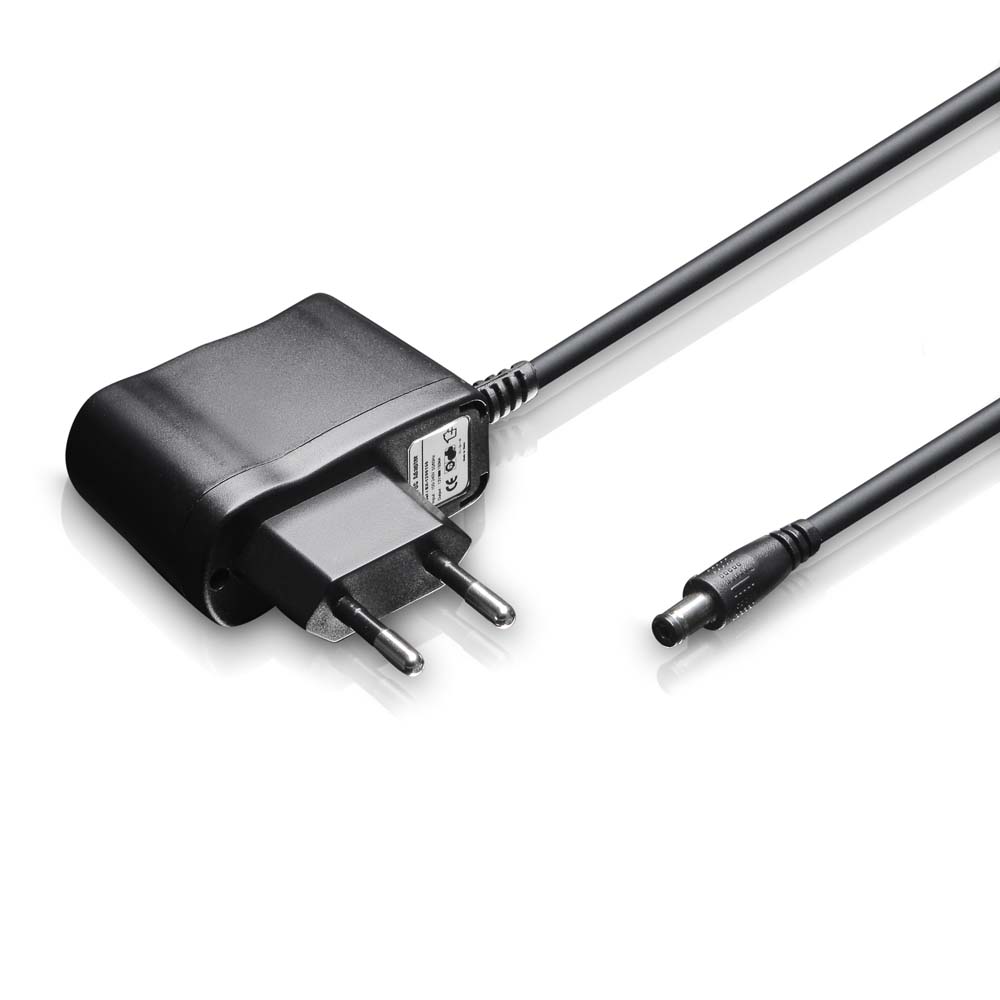
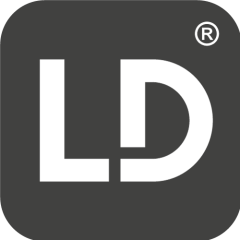

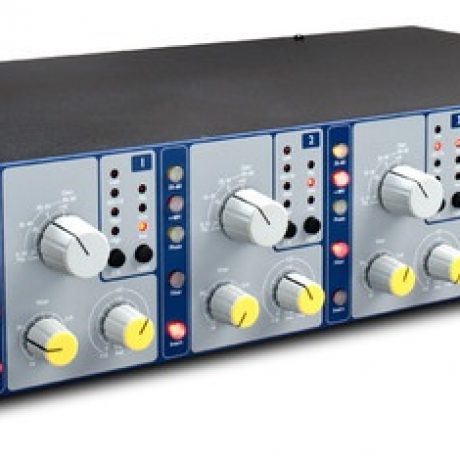












Reviews
There are no reviews yet.